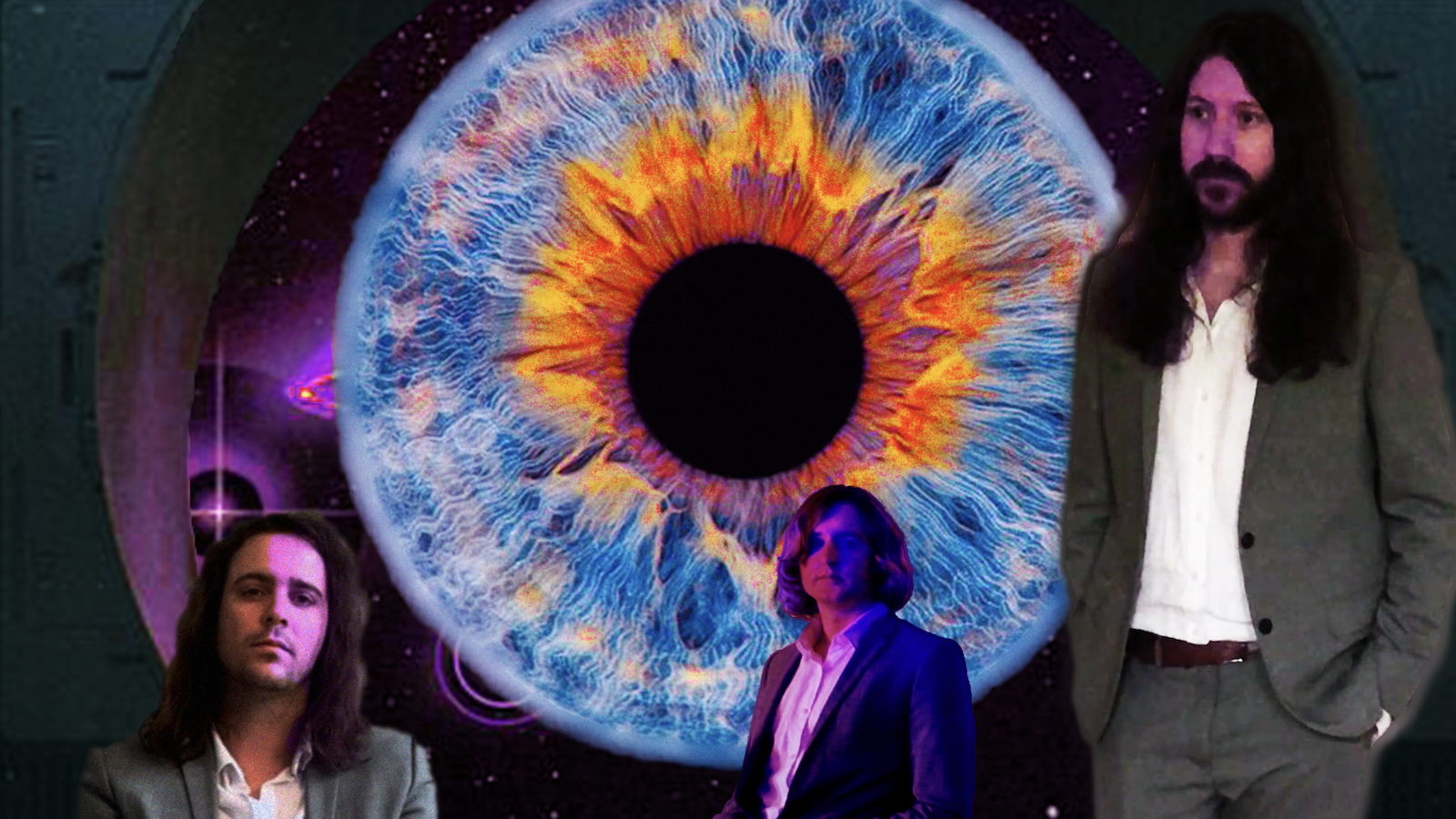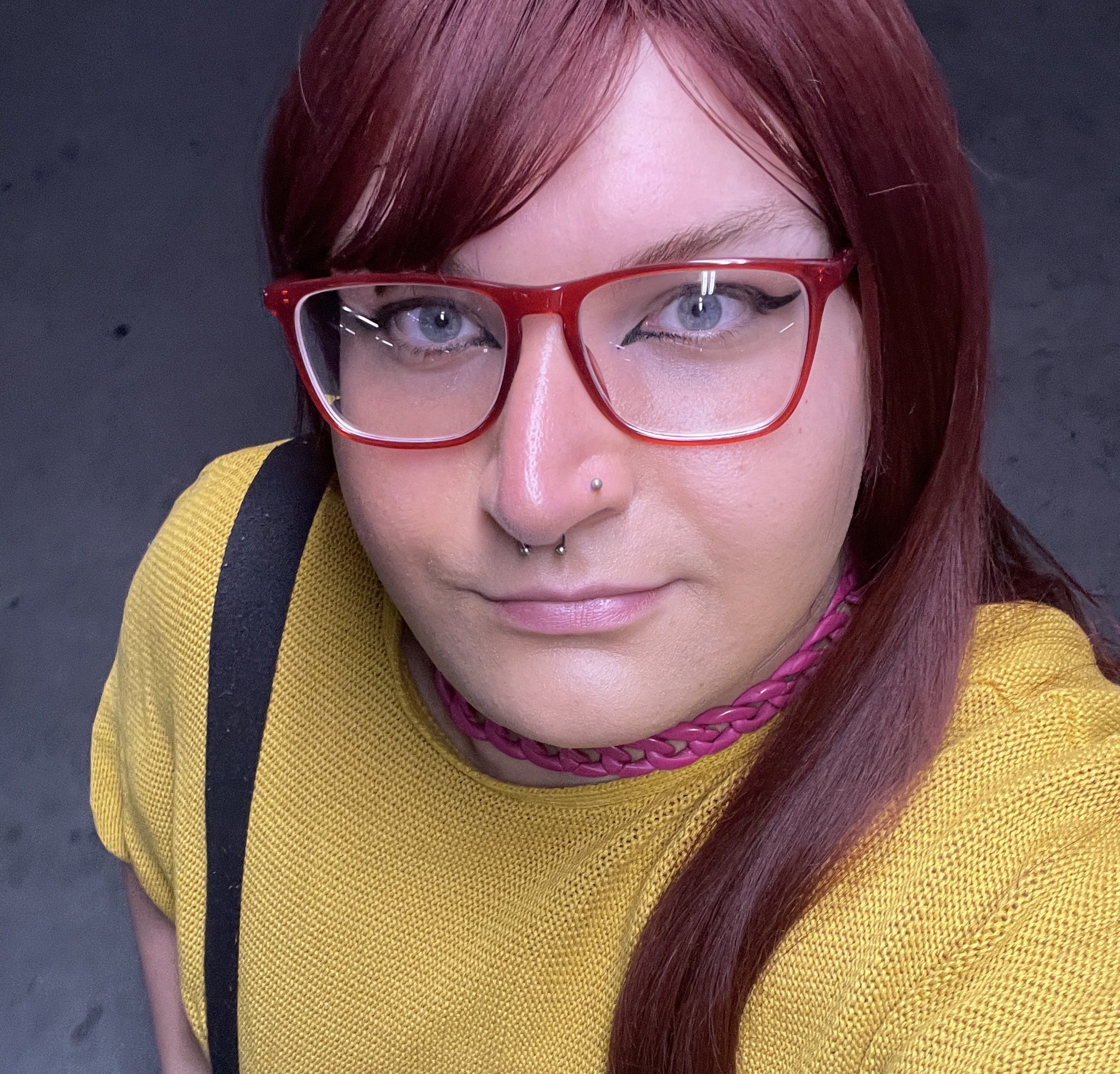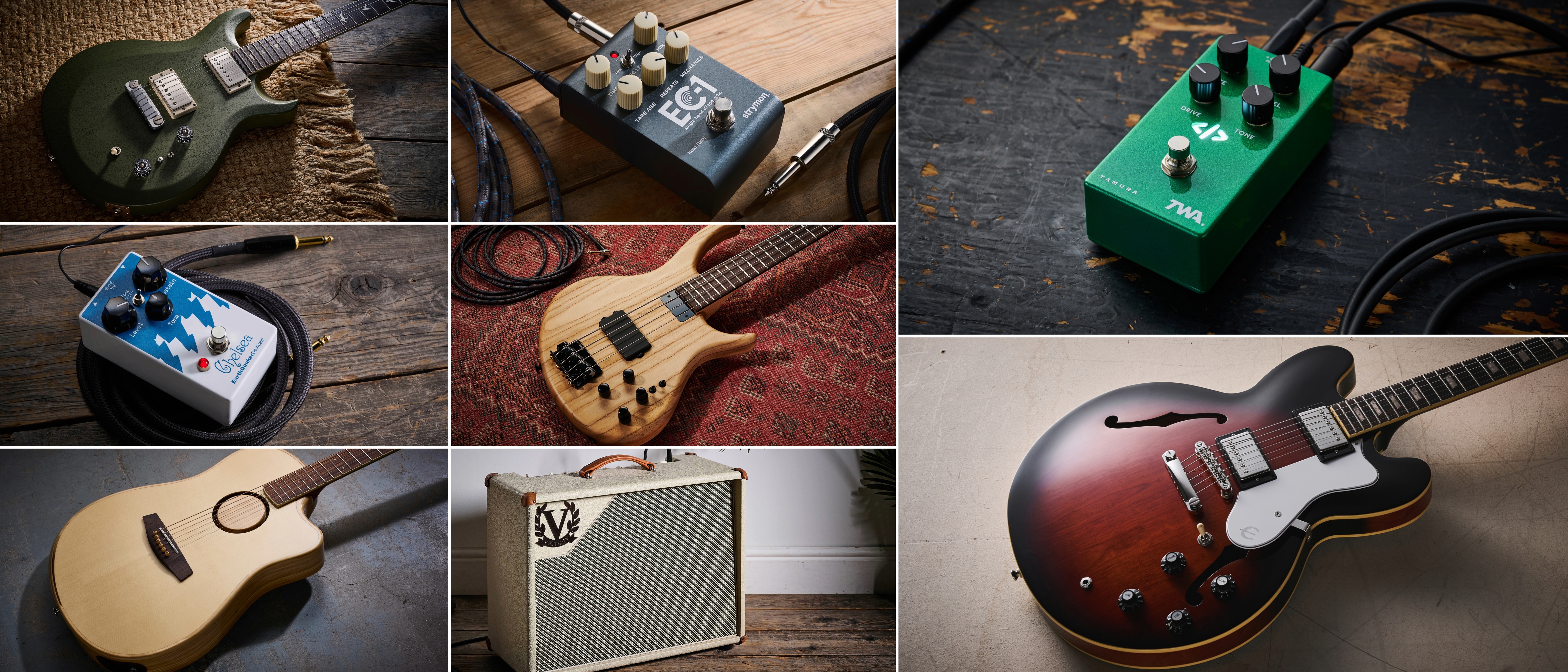DZ Deathrays’ Shane Parsons and Lachlan Ewbank: “It’s almost like the record opens up as you get further and further into it”
After what feels like the longest two years in history, DZ Deathrays bring their Positive Rising era to an explosive peak, delivering riffs aplenty on a tight and turbulent new long-player

Though its bulk was penned in the early months of 2019, Positive Rising Part 2 – album #6 from the dance-punk debonairs in DZ Deathrays, and, as its title suggests, the second half of their monstrous Positive Rising project – feels distinctly suited for the mid-pandemic slog of 2021.
It’s the yang to Part 1’s yin, darker and stormier with heavier riffs, deeper grooves and an amplified wallop of frontman Shane Parsons’ wry, acerbic wit. Especially given DZ’s bout of quiet preceding it (which was forced by the COVID outbreak of 2020 – the initial plan was to jump straight from disc to disc), Part 2 marks a belting snap back to the spotlight for the Brisbane trio.
But like a lot of what’s made DZ Deathrays such an impenetrable force on Australia’s rock and punk scene, Positive Rising had a notably lowkey origin story – the band didn’t set out to create some towering, generational concept album epic; many of the songs came together on a whim, with Parsons, co-shredder Lachlan Ewbank and snarelord Simon Ridley embracing their naturally loose and luminescent character, rather than forcing themselves to be something they aren’t.
Ahead of the album’s release this July, we caught up with Parsons and Ewbank to riff on the way Positive Rising Part 2 takes DZ Deathrays to a whole new level – and, excitingly, what to look forward to from album no. seven (which looks set to come much sooner than later).
Was there a creative intent behind the decision to work on each part of Positive Rising separately?
Shane: It was essentially just that those songs [on Positive Rising Part 1] were finished first, and then these ones all needed a little bit more love. We started the process going, “Alright, these are the 20 songs that are going to make up this album,” and the nine on Part 1 were just the first nine that we had ready to go. We recorded them with out friend Miro [Mackie] in LA – he lives out there, and we’d always wanted to do the whole self-indulgent ‘go to LA and make a record’ kind of thing. So we did Part 1 there, and then we ended up going back to The Grove in Sydney for Part 2, because it’s just such a great studio, they have a lot of great gear and a really nice vibe.
It’s kind of funny though, because I feel like the first part is a lot more indie-punk, and then the second one has a lot more of that big, rock ’n’ roll kind of stuff – it’s almost like the record opens up as you get further and further into it. So yeah, there are definitely some tonal differences, but I think if you listen to the two records back to back, it should all work together quite well. It was all recorded and mixed by the same engineer, too. It was funny: we spent so much time on Part 1 just getting the mix right, but when it came to Part 2, he mixed it once and we were all like, “Man, that’s practically spot on!”
Part 2 feels a little moodier and a little more intense. Where did that darkness come from?
Shane: I think that comes down to the crossover between Lachlan and I. Lachlan writes a lot of stuff in minor and I write a lot in major, so between the two of us you get this kind of alternating mood. I think it’s great, because it sort of f***s with your head a little bit. I know The Strokes do it really well where the mood is upbeat but it sounds pretty downbeat, and that sort of feeling is really interesting. It’s a cool dynamic.
All the latest guitar news, interviews, lessons, reviews, deals and more, direct to your inbox!
In terms of guitars, this record just absolutely f***ing rips. What made you want to really crank up the riffs for Part 2?
Shane: It definitely just happened organically. “Swept Up” was a demo I had that was super rough, and in the studio we were like, “Should we listen to it again?” But we decided that it kind of had a good vibe – it was really quite different and fit into that bluesier, darker world we were going for, so a lot of the shit in that song was all written on the spot.
The first solo I played for that track, I don’t actually know how to play it. I just played something and went, “Oh, that sounds good!” And then Lachy got on the slide guitar to give it that kind of woozy, blues-country feel. And then with those space-y sort synths underneath it, to me, it’s one of the most interesting songs on the record. Because there was no real thought going into it – we were like, “Ah, let’s just throw things at it and see what happens.”
It’s always just about whatever works. With “Make Yourself Mad”, for instance, we wrote that riff so long ago – just after we finished Bloody Lovely, we had a writing session in Yass and it was one of the first songs we wrote as a three-piece. And back then, I think we just had a riff; we didn’t have a melody or any sort of vocal ideas, and it took so many years for us to get it to that point. I was just staying at an Airbnb with some friends on the Gold Coast, I had an acoustic guitar with me and I wrote the chorus there, just because I had some time to kill and I was feeling a little bit inspired.
And then “Riff City” – y’know, that’s just a jam. We really wanted to give those sorts of songs a bit more time to shine on the record, rather than focus completely on just chords or single-note stuff. [Positive Rising Part 1] feels a lot more like that driving, straight rock sort of stuff, and then this one has a lot more of those groove-oriented riffs.
“Golden Retriever” seems like a good example of that. That track is groovy as hell.
Shane: That’s a funny one! That’s another latecomer to the record – I was working on some demos with Al Grigg from Palms, and when I got to his house he was like, “Oh shit, I left my guitar at Owen’s place, let me see if he’s home and I’ll go pick it up.” So I was just at his house by myself, and he had a really nice acoustic, and I wrote that song in like ten minutes, there, on that guitar. And I was like, “Oh shit, I better record this on my phone!” And then all I did was tweak the chorus a couple of weeks later. So that was another one of those really last-minute things that we just went with. It was a fun one!
It’s all about going with the flow!
Shane: Totally. I think we spend so much time getting caught up on certain songs – and I hope it’s paid off, but I feel like whenever you get the chance to just sort of open yourself up, play whatever comes to mind and just be like, “Ah, that sounds great,” it’s really special. We’ve definitely overthought songs in the past, and sometimes the best ones are the ones that just come naturally.
Lachlan: That’s kind of like with “All Or Nothing”, all the different versions you tried to do, and then we ended up sticking with the original. You’ve gotta just believe in yourself!
Shane: I know! But then you get a lot of cooks in the kitchen when you have a producer and a label, and all of those different voices chiming in. Because y’know, with “All Or Nothing”, everyone was like, “It sounds like two different songs.” And I was like, “Well, it kind of is.” There’s a key change between the verse and the chorus, and in the end that just made it flow a lot better. But I re-wrote that song maybe six times in different keys, trying to get the chorus and the verse to sit closer together. But in the end, it didn’t have the same feeling or the same sort of weird ‘switching gears’ kind of thing. I am glad we kept it the way it was originally.
When that chorus kicks in, it’s just like, “Oh shit!” It takes you to a totally different musical atmosphere.
Shane: Yeah, totally! That’s what I love about it. It’s like tension and release: you’re holding onto this F# for ages in the verses, and then it slides up to a D – which is kind of unusual, but it works. At the start, Miro was pushing me to make the verses and the chorus level out, but in the end he was like, “Y’know what? Maybe you’re right. If it sounds cool to you, just do it.” And to me, it’s a fun song. We played it live the other week, and it was just so great to play!
What did the gear arsenal look like for these recording sessions?
Lachlan: We were very lucky, we used a very old Les Paul that we borrowed from Murray Cook, which was incredible. It’s all over the record – all of my solos were done on that. And then I’ve got an Ed O’Brien Strat, which is my go-to guitar for pretty much everything.
Shane: I used my Powercaster for everything in Drop D, and then I used Lachy’s Strat for a lot of the chordal stuff as well. The humbucker I use on my Powercaster is awesome for that real hard, blocky sound, but if you want a bit more definition, it can get a bit mushy sounding. So the mini humbucker on that Strat worked really well for those parts, and then for anything in Drop C or CADGBE, we had the Stratocaster I play live with set up for that tuning. It has a 58 on the low C, and then I think a 13 on the E, and then it has this crazy stripped G that’s like a piano wire. And there’s a bit of acoustic guitar on there, too.
Lachlan: Oh, the Gibson! There was a real old one at the studio, which was really nice.
Shane: We used that on “Swept Up”, you can kind of hear it padding out the back – which was really nice to do. It was really nice to learn how to play an acoustic again. It’s so rhythmic, and it’s actually a lot harder to play than you’d expect. You’ve really gotta work on your strumming pattern to make sure it locks into the kit and everything.
Do you see yourself doing more of that rhythmic, bluesy acoustic stuff in the future?
Shane: Well on the next record [after Positive Rising Part 2], there’s a track that’s pretty much all acoustic, except for the chorus. I’ve always wanted to do an acoustic DZ song – it’s still heavy, but I wanted to lean into that Beck-esque sort of world. I love the acoustic guitar – one of the most fun things you can do is put an acoustic through a distortion pedal. It actually sounds amazing.
What else can you tell us about DZ LP #6?
Lachlan: There’s a bit more attitude, I reckon!
Shane: Yeah. It’s actually quite upbeat and positive. I think we wrote a bunch of songs that were a bit sad when lockdown first started, and I was just like, “Y’know what? People don’t want to be reminded of this time.” Writing about that kind of stuff really puts a timestamp on it, so I was like, “Nah, f*** this. Let’s write for the future, when people are allowed to do whatever they want again – when they can go to a bar and jump on top of each other, share each other’s drinks…” I feel like whatever the next record is, it’s shaping up to feel a bit like Bloody Lovely in some ways. But maybe a bit more punk? Yeah, it’ll be interesting…

Ellie Robinson is an Australian writer, editor and dog enthusiast with a keen ear for pop-rock and a keen tongue for actual Pop Rocks. Her bylines include music rag staples like NME, BLUNT, Mixdown and, of course, Australian Guitar (where she also serves as Editor-at-Large), but also less expected fare like TV Soap and Snowboarding Australia. Her go-to guitar is a Fender Player Tele, which, controversially, she only picked up after she'd joined the team at Australian Guitar. Before then, Ellie was a keyboardist – thankfully, the AG crew helped her see the light…
